

January 11 – 17: “Are the lines between good and evil increasingly more ambiguous in modern thrillers?”
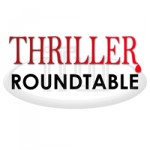 We have a full house this week! ITW Members Blair McDowell, Brendan P. Rielly, Kim Alexander, Rick Ollerman, John H. Gibson, W.D. Gagliani, Bernard Maestas, H.A. Raynes, Jean Heller, R. J. Harlick, C.E. Lawrence and Matthew FitzSimmons have gathered to answer the question: Are the lines between good and evil increasingly more ambiguous in modern thrillers?
We have a full house this week! ITW Members Blair McDowell, Brendan P. Rielly, Kim Alexander, Rick Ollerman, John H. Gibson, W.D. Gagliani, Bernard Maestas, H.A. Raynes, Jean Heller, R. J. Harlick, C.E. Lawrence and Matthew FitzSimmons have gathered to answer the question: Are the lines between good and evil increasingly more ambiguous in modern thrillers?
~~~~~
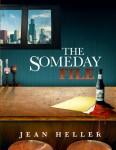 Most of Jean Heller’s career was as an investigative and projects reporter and editor in New York City, Washington, D.C. and St. Petersburg Florida. Her career as a novelist began in the 1990s with the publication of the thrillers, Maximum Impact and Handyman by St. Martin’s Press. Then life intervened and postponed her new book, The Someday File, to publication in late 2014. Jean has won the Worth Bingham Prize, the Polk Award, and is an eight-time Pulitzer Prize nominee.
Most of Jean Heller’s career was as an investigative and projects reporter and editor in New York City, Washington, D.C. and St. Petersburg Florida. Her career as a novelist began in the 1990s with the publication of the thrillers, Maximum Impact and Handyman by St. Martin’s Press. Then life intervened and postponed her new book, The Someday File, to publication in late 2014. Jean has won the Worth Bingham Prize, the Polk Award, and is an eight-time Pulitzer Prize nominee.
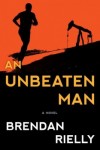 An Unbeaten Man is Brendan Rielly’s first thriller. Brendan is a member of ITW and Maine Writers & Publishers Alliance and studied advanced fiction writing while attending law school. Brendan is chair of Jensen Baird’s litigation department and lives with his wife and three children in Westbrook, Maine, where he is the City Council President. Brendan is the middle of three generations of Maine authors with his father and son (as a high school senior) also published.
An Unbeaten Man is Brendan Rielly’s first thriller. Brendan is a member of ITW and Maine Writers & Publishers Alliance and studied advanced fiction writing while attending law school. Brendan is chair of Jensen Baird’s litigation department and lives with his wife and three children in Westbrook, Maine, where he is the City Council President. Brendan is the middle of three generations of Maine authors with his father and son (as a high school senior) also published.
 Canadian author, RJ Harlick writes the popular wilderness-based Meg Harris mystery series set in the wilds of Quebec. With an underlying Native theme, each book explores not only the motives behind murder, but also issues facing Natives today and their traditional ways. The fourth book, Arctic Blue Death was a finalist for the Arthur Ellis Award for Best Novel. The latest and seventh in the series, A Cold White Fear, was recently released to critical acclaim. RJ is a past president of Crime Writers of Canada.
Canadian author, RJ Harlick writes the popular wilderness-based Meg Harris mystery series set in the wilds of Quebec. With an underlying Native theme, each book explores not only the motives behind murder, but also issues facing Natives today and their traditional ways. The fourth book, Arctic Blue Death was a finalist for the Arthur Ellis Award for Best Novel. The latest and seventh in the series, A Cold White Fear, was recently released to critical acclaim. RJ is a past president of Crime Writers of Canada.
 Blair McDowell spent several years as a university professor and author of six books still widely used in her field. She traveled extensively as a part of her work, studying in Hungary when it was still under the Russian boot, teaching in an Australian university, collaborating with co-authors in Iceland, researching in the South Pacific. And always she wrote. When she retired, she turned to writing fiction. Her recently released fifth novel of romantic suspense, Where Lemons Bloom, is set on the Amalfi Coast of Italy, and just two weeks before the attack she was in Paris working on her sixth, Fatal Charm. Blair is a firm believer in on-site research.
Blair McDowell spent several years as a university professor and author of six books still widely used in her field. She traveled extensively as a part of her work, studying in Hungary when it was still under the Russian boot, teaching in an Australian university, collaborating with co-authors in Iceland, researching in the South Pacific. And always she wrote. When she retired, she turned to writing fiction. Her recently released fifth novel of romantic suspense, Where Lemons Bloom, is set on the Amalfi Coast of Italy, and just two weeks before the attack she was in Paris working on her sixth, Fatal Charm. Blair is a firm believer in on-site research.
 Bernard Maestas lives in paradise. A police officer patrolling the mean streets of Hawaii, he has a background in contract security and military and civilian law enforcement. When not saving the world, one speeding ticket at a time, and not distracted by video games or the internet, he is usually hard at work on his next book.
Bernard Maestas lives in paradise. A police officer patrolling the mean streets of Hawaii, he has a background in contract security and military and civilian law enforcement. When not saving the world, one speeding ticket at a time, and not distracted by video games or the internet, he is usually hard at work on his next book.
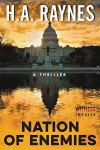 H.A. Raynes’ debut novel, NATION OF ENEMIES, was published by HarperCollins/ Witness Impulse in August of this year. Inspired by a family member who escaped Poland in WWII, Raynes combined lessons from the past with a healthy fear of the modern landscape. A longtime member of Boston’s writing community, Raynes was a finalist in the Massachusetts Screenwriting Competition and has published a short story in the online magazine REDIVIDER.
H.A. Raynes’ debut novel, NATION OF ENEMIES, was published by HarperCollins/ Witness Impulse in August of this year. Inspired by a family member who escaped Poland in WWII, Raynes combined lessons from the past with a healthy fear of the modern landscape. A longtime member of Boston’s writing community, Raynes was a finalist in the Massachusetts Screenwriting Competition and has published a short story in the online magazine REDIVIDER.
 Kim Alexander grew up on Long Island, drifting south until she reached Key West. Sometime later, she regained consciousness and moved to Washington DC, co-programming Sirius XM Book Radio. She began writing when she ran out of authors to interview. Kim lives with two cats, an angry fish, and her extremely patient husband close enough to the National Zoo to hear the lions and monkeys, at least she hopes that’s what those noises are.
Kim Alexander grew up on Long Island, drifting south until she reached Key West. Sometime later, she regained consciousness and moved to Washington DC, co-programming Sirius XM Book Radio. She began writing when she ran out of authors to interview. Kim lives with two cats, an angry fish, and her extremely patient husband close enough to the National Zoo to hear the lions and monkeys, at least she hopes that’s what those noises are.
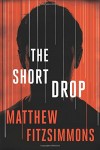 Matthew FitzSimmons was born in Illinois and grew up in London, England. He now lives in Washington, DC, where he taught English literature and theater at a private high school for over a decade. The Short Drop is his first novel.
Matthew FitzSimmons was born in Illinois and grew up in London, England. He now lives in Washington, DC, where he taught English literature and theater at a private high school for over a decade. The Short Drop is his first novel.
 W.D. Gagliani is the author of the novels Wolf’s Trap, Wolf’s Gambit, Wolf’s Bluff, Wolf’s Edge, Wolf’s Cut, Wolf’s Blind (upcoming), and Savage Nights, plus the novellas Wolf’s Deal and The Great Belzoni and the Gait of Anubis. Wolf’s Trap was a finalist for the Bram Stoker Award in 2004. He has published fiction and nonfiction in numerous anthologies and publications such as Robert Bloch’s Psychos, Undead Tales, More Monsters From Memphis, The Midnighters Club, The Asylum 2, Wicked Karnival Halloween Horror, Small Bites, The Black Spiral, and others.
W.D. Gagliani is the author of the novels Wolf’s Trap, Wolf’s Gambit, Wolf’s Bluff, Wolf’s Edge, Wolf’s Cut, Wolf’s Blind (upcoming), and Savage Nights, plus the novellas Wolf’s Deal and The Great Belzoni and the Gait of Anubis. Wolf’s Trap was a finalist for the Bram Stoker Award in 2004. He has published fiction and nonfiction in numerous anthologies and publications such as Robert Bloch’s Psychos, Undead Tales, More Monsters From Memphis, The Midnighters Club, The Asylum 2, Wicked Karnival Halloween Horror, Small Bites, The Black Spiral, and others.
 Rick Ollerman is the author of two previous books, TURNAROUND and SHALLOW SECRETS, as well as the editor and contributor to the non-fiction reference book PAPERBACK CONFIDENTIAL. He has written essays that have served as introductions for over a dozen books, had several short stories published, and is currently working both on a new novel and on the non-fiction story of a woman who had been on the run for over a decade.
Rick Ollerman is the author of two previous books, TURNAROUND and SHALLOW SECRETS, as well as the editor and contributor to the non-fiction reference book PAPERBACK CONFIDENTIAL. He has written essays that have served as introductions for over a dozen books, had several short stories published, and is currently working both on a new novel and on the non-fiction story of a woman who had been on the run for over a decade.
 John H. Gibson was employed in the high-tech Engineering field for over 25 years. Moving around the country for his work, he began writing thrillers as a diversion. It wasn’t long before the diversion became an obsession. His first novel DUMMY, hopefully soon to be republished by Oaktree Press, is an amazing tale of political intrigue, sudden death and a spy-chase that moves from New York City to Atlantic City to Washington, DC to San Francisco. His second novel, to be released Christmas of 2015 also by Oaktree Press, is TRACK THREE, another chilling political thriller, infested with unique characters from our hero Elliott Lawder, a crack investigative reporter, to the CIA and bad FBI agents, to creepy politicians, to a very unique black female London street urchin.
John H. Gibson was employed in the high-tech Engineering field for over 25 years. Moving around the country for his work, he began writing thrillers as a diversion. It wasn’t long before the diversion became an obsession. His first novel DUMMY, hopefully soon to be republished by Oaktree Press, is an amazing tale of political intrigue, sudden death and a spy-chase that moves from New York City to Atlantic City to Washington, DC to San Francisco. His second novel, to be released Christmas of 2015 also by Oaktree Press, is TRACK THREE, another chilling political thriller, infested with unique characters from our hero Elliott Lawder, a crack investigative reporter, to the CIA and bad FBI agents, to creepy politicians, to a very unique black female London street urchin.
 Carole Bugge (C.E. Lawrence) is the author of nine published novels, award-winning plays, musicals, poetry and short fiction. A two time Pushcart Poetry Prize nominee, her most recent Lee Campbell thrillers are Silent Slaughter and Silent Stalker, under the pen name C. E. Lawrence. Her short stories were selected for the two most recent Mystery Writers of America anthologies. Her Sherlock Holmes novels, The Star of India and The Haunting of Torre Abbey, have recently been reissued, along with her Claire Rawlings mystery series. Her latest book is the historical thriller, Edinburgh Twilight.
Carole Bugge (C.E. Lawrence) is the author of nine published novels, award-winning plays, musicals, poetry and short fiction. A two time Pushcart Poetry Prize nominee, her most recent Lee Campbell thrillers are Silent Slaughter and Silent Stalker, under the pen name C. E. Lawrence. Her short stories were selected for the two most recent Mystery Writers of America anthologies. Her Sherlock Holmes novels, The Star of India and The Haunting of Torre Abbey, have recently been reissued, along with her Claire Rawlings mystery series. Her latest book is the historical thriller, Edinburgh Twilight.
- LAST GIRL MISSING with K.L. Murphy - July 25, 2024
- CHILD OF DUST with Yigal Zur - July 25, 2024
- THE RAVENWOOD CONSPIRACY with Michael Siverling - July 19, 2024
